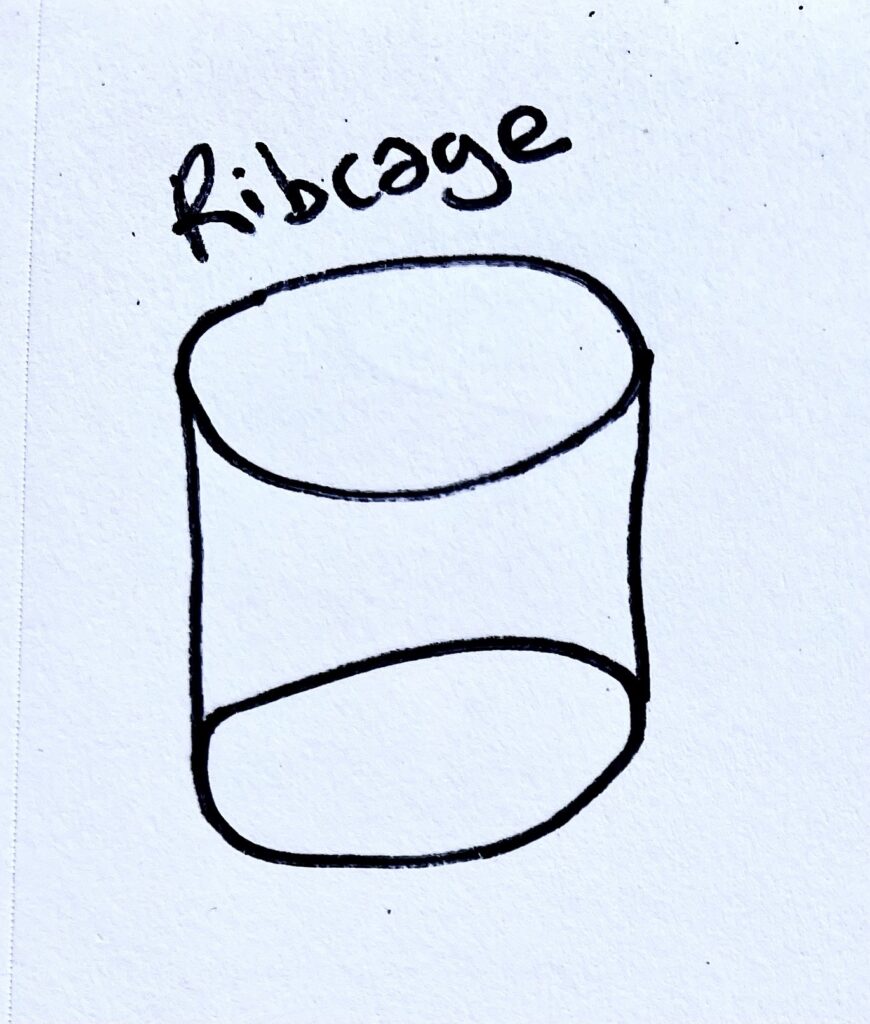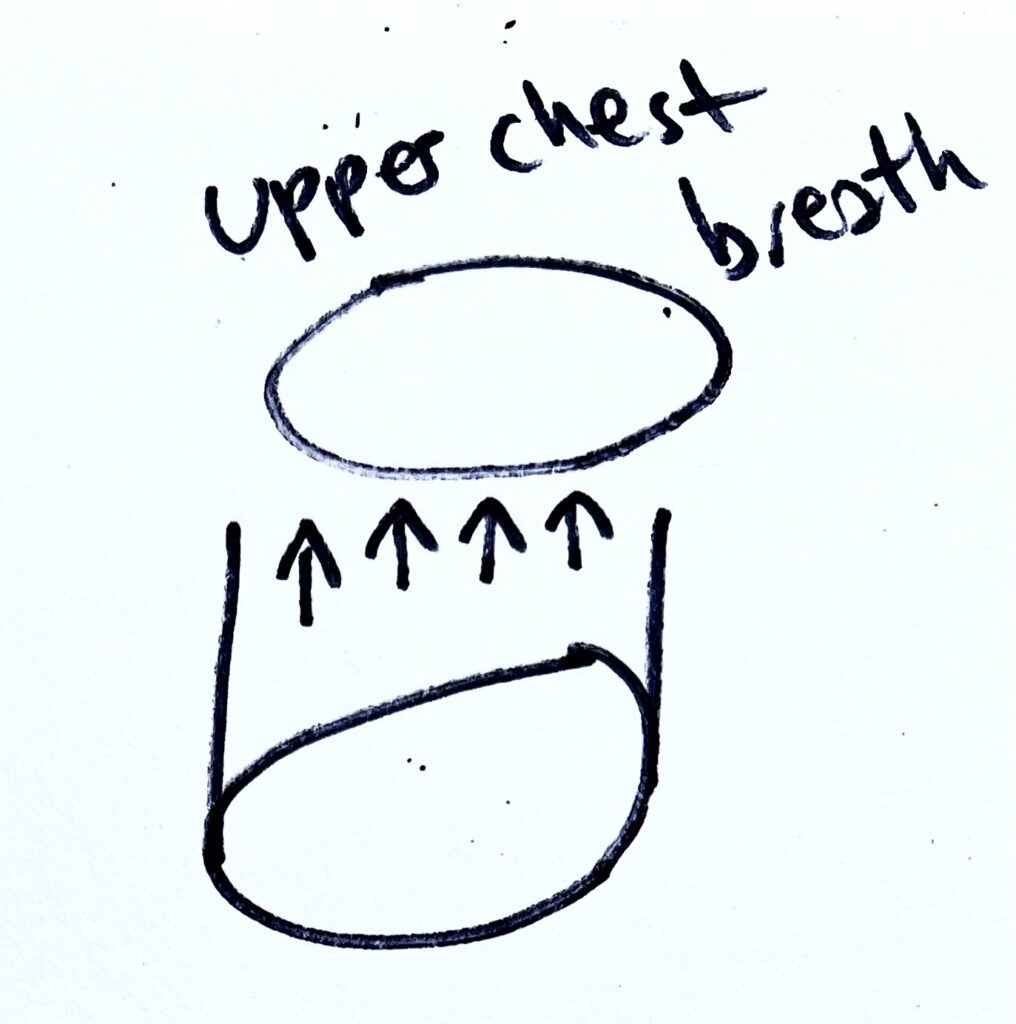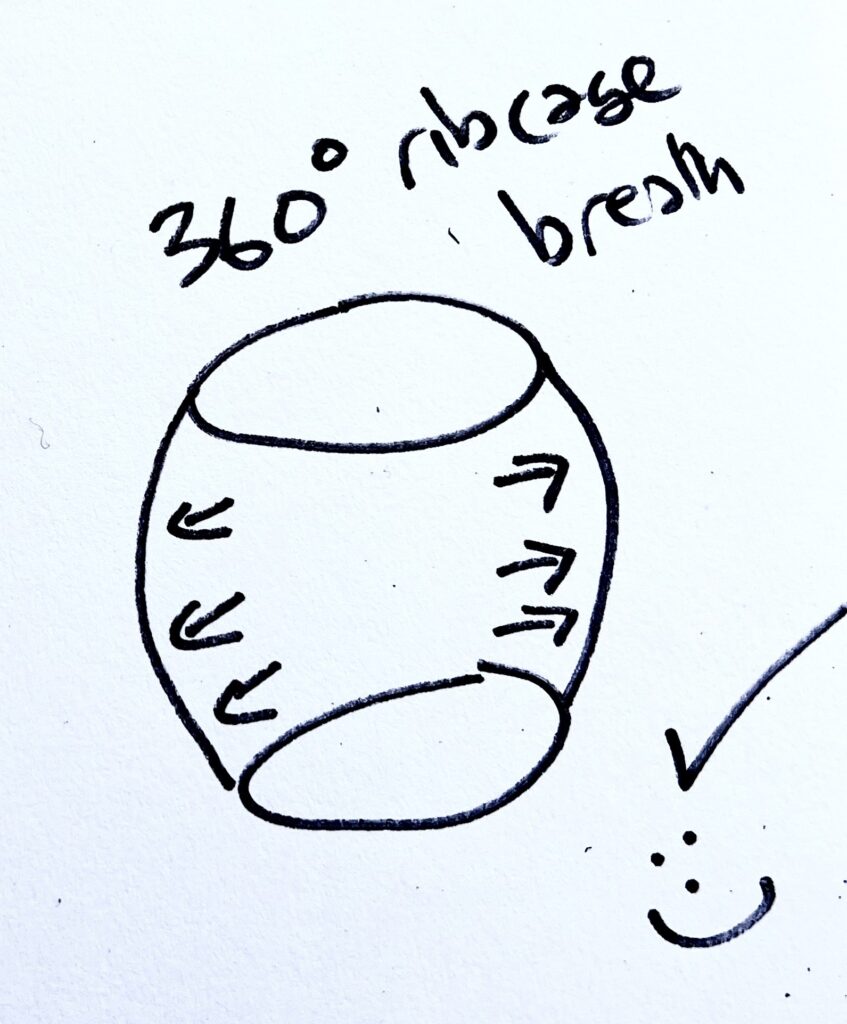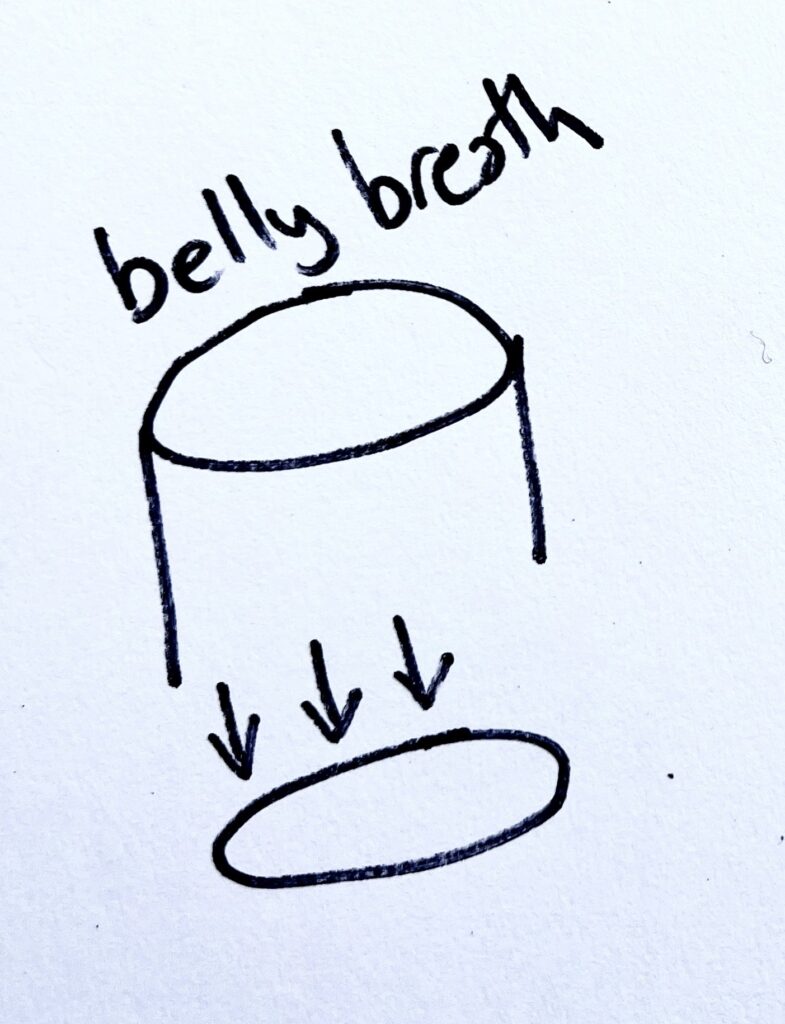I believe that it’s important to treat causes and not symptoms when it comes to treating a pelvic floor issue (or any other musculo-skeletal condition). Where you’re hurting is often not where the issue is actually being created (for more info about how to troubleshoot pain, check out this blog post.)
Sometimes people are surprised to come to one of my pelvic floor classes and never once do a kegel, or anything resembling one.
But the thing is that your pelvic floor weakness is probably not caused your pelvic floor muscles – it’s just a symptom. The cause is your whole body movement patterns. Something about the way you move is creating forces that have resulted in short, weak pelvic floor muscles. The fix isn’t to strengthen just the muscles down there, but to step back and improve the way your entire body moves.
For instance, the way you breathe makes a huge and direct impact on your pelvic floor health.
Did you know that there are actually three main strategies that you can use to breathe? Your thoracic cavity and lungs are like a container, and you have to change the size of this container in order to draw air in and then push it out.

There are three ways to change the size of your container and you can test these all out:
First, try chest breathing – inhale by elevating your shoulder girdle. Here, the air goes mostly into the top part of your lungs because you’ve increased the space at the top of your thoracic container.

Next, try rib breathing – put your hands around your lower ribcage and inhale to expand your ribs out to the sides. As you breath out, the ribs contract in. This time, you’ve enlarged your container by increasing its circumference.

Finally, you can breath by really dropping your diaphragm, pushing in the bottom of your container. Your belly will rise as you inhale – this is the way you breathe when you do ‘belly breathing’ in yoga class.

All three of these strategies get air into your lungs, and all of them have their uses. However, I like rib breathing the best as a main strategy. That’s because if you spend all your time breathing into your chest or your belly, you can create some undesirable side effects.
When you breathe primarily with your upper chest, you create an upward ‘smushing’ force that compresses and damages the discs in the neck. So that’s no good.
When you breathe mostly with your diaphragm, you create a plunger-type effect, pushing pressure down into your abdominal cavity. This in turn puts pressure on your pelvic floor. Over time, this constant pressure can overload the pelvic floor and it can’t do its job any more – stuff starts to leak, or to hurt.
This means that if you have a pelvic floor issue, one of the first things I want to help you learn is how to use your ribs more when you breathe. And to do that, you need to fix the reason why you’re breathing poorly in the first place.
In this video, we’ll cover:
👉 what diaphragmatic breathing actually is & whether you should even worry about it
👉 what an ideal breathing pattern should look & feel like
👉 how to explore breathing for long-term health & everyday activities
👉 how to assess your current breathing patterns
👉 how to explore some new breathing techniques
Equipment you’ll need:
✅ Yoga strap
✅ Cushion or pillow and half dome for bolstering (optional but recommended)
And remember when you practice this that it’s an exercise! You practice the exercise, you change how your breathing happens, and then go out in your day and let your body do its thing. Super simple!
Since tight shoulders and limited upper back mobility can affect how you breathe, it’s also SUPER important to spend some time working on lengthening your chest and shoulder muscles.
Another movement habit that can make a big difference to your breathing – and to your pelvic floor health – is the daily alignment of your ribcage & spine. Many of us lift our ribs up as a postural habit, which can really imact our breathing canister! If you want help changing this (instantly) try my FREE Ribcage Magic video series right here!







